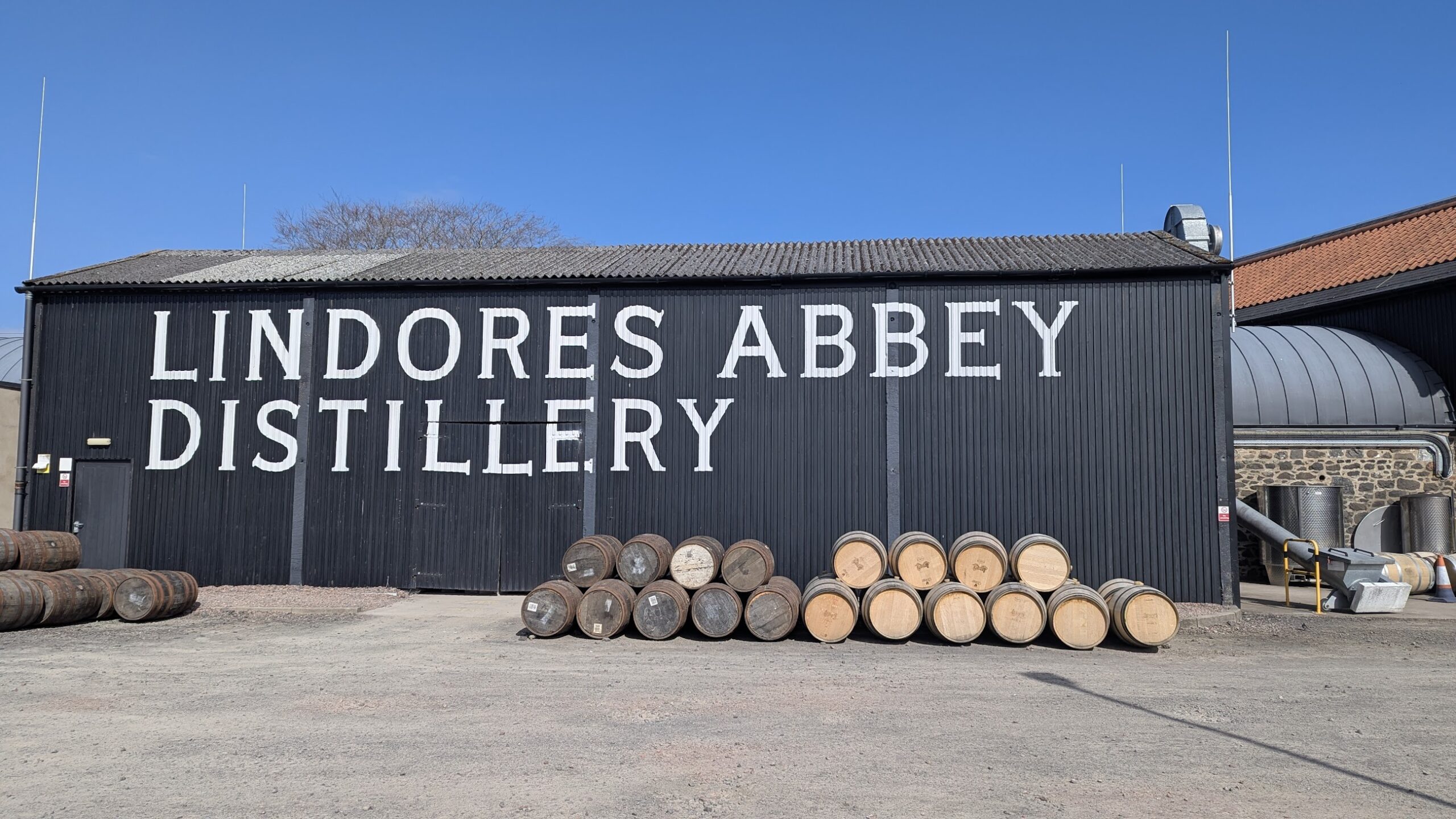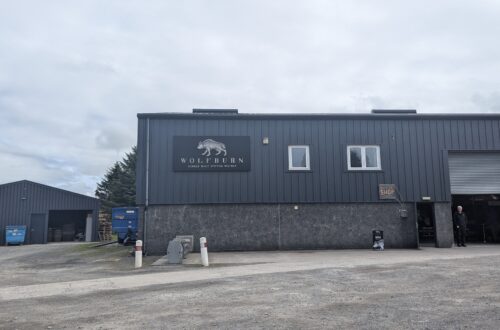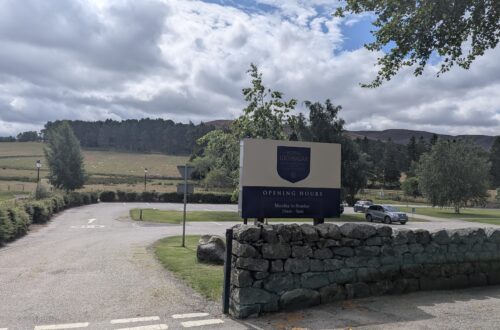
Tullibardine Distillery
Travel:
Train: Edinburgh – Stirling (Dunblane) – 51min
Bus: Stirling – Blackford (20) – 33 min
Walk: 3 Mins
My Itinerary:
08:37 – 09:30: Edinburgh – Stirling
09:55 – 10:28: Stirling- Blackford
11:00 – 11:45: Classic Tour
12:15 – 13:45: Pint at Blackford Inn
14:00 – 14:35: Blackford – Stirling
15:03 – 15:57: Stirling – Edinburgh
Directions:
There are different transport options for getting to Tullibardine and the nearest train station is actually Gleneagles, where you can get the 19 bus to Blackford. However, I decided to take an alternative route, as I did not want to take two trains and a bus so headed to Stirling train station, and then connected onto the 20 bus to Auchterarder from Striling Bus Station. This bus station is only a couple of minutes’ walk from the train station (exit the station and turn left) so it is a straight forward transfer. I took the bus to Blackford and got off at the Moray Institute stop (pictured below), which was only a couple of minutes’ walk to the distillery (cross the road then turn right and it is on your left hand side).

Local Area
Blackford is a small village between Perth and Stirling, and it is a fairly remote location. There are not many amenities in the area besides the distillery; the only other main business is the Highland Spring water factory. However, I did notice a sign for the Blackford Highland Games, which is hosted in the town centre once a year. There were not many food options available when looking to get lunch, but there is some hot food in the village shop (pies, sausage rolls, bakes), and I opted for a hot pie, which was fine. There is also a kitchen at the Blackford Inn, but it was closed when I was visiting. However, the Inn is a great place to stop off if you have free time, when waiting on your bus, which is exactly what I did during my visit. I visited with a friend, and we were asked multiple times if we enjoyed the distillery tour, despite never mentioning the fact that we were visiting the distillery, so obviously it’s easy to spot the non-locals. However, the locals are super friendly and great to chat with. I got talking with the bartender, and he had a bottle of Tullibardine from 1969, which he was kind enough to show me, and it looked amazing.
Distillery Amenities
The visitor centre at the distillery has a sizable shop, where there is a full range of Tullibardine merchandise available, including distillery branded jumpers, hats and whisky glasses. There is also of course a wide selection of whisky to purchase from the Tullibardine core range to more premium options, the most expensive of which was priced at £10,000! There are no café or food options at the distillery, but there is was a whisky bar at the far end of the shop where you could buy a selection of Tullibardine single malts or a flight of whiskies.

History
The distillery site has a rich history of distilling, as there are records of beer being brewed onsite which date back to 1488 when the distillery was visited by a young King James IV. It was converted into a whisky distillery by William Delmay Eveans in 1947 and then changed hands a few times before being shut down in 1994. It was then reopened in 2003 and was bought by the current owners, Michelle Picard, in 2014. The current owners have expanded the distillery and continue to operate it independently. They also own a wine company, which means they have access to a large collection of wine casks, and this is why you will find a large amount of unique wine finishes for Tullibardine in the shop.
Tour
The tour I booked was the standard tour, which is very reasonably priced at £12, and I found it to be a a quite informal vibe, which I like and I think is one of the benefits of a smaller independent distillery rather than the larger corporate distilleries. As I was visiting in the off-season, it was only myself and a friend on the tour, which was even better value for money as it was like having a private tour. The tour begins in the shop with a discussion of the history of the site, then it continues outside, where you head to the production area of the distillery. There is no photography in the distillery allows so I can’t share pictures, but one of the first things you see is the old bright red porteous mill, which is used for breaking down the barley and is a staple of many of the older distilleries in Scotland and I am always glad to see them as they are amazing pieces of kit and so reliable. The next stop is the room where the mash tun, washback’s and stills are kept, and one of the things that stood out to me was the size of the distillery compared to the production levels. Everything is fairly tightly packed into a small space, to the point that there are even a couple of washbacks outside as they ran out of space. The distillery produces around 3 million litres of whisky each year, which sounds like an impressive amount, although the guide mentioned that this only accounts for around 0.7% of the total amount of whisky produced in Scotland each year.
The final part of the tour ends in the warehouse, which is always one of my favourite places. Although the distillery was only re-opened in 2003, there were 2,500 casks which were still from pre-1994, and these have been used for a mix of celebration and old age statement whiskies such as the 25-year-old. I saw a barrel which was just a bit older than me, dating from 1983, which is waiting to be bottled, but they have also had bottlings of 60-year-old whisky.

Tasting
The end of the tour culminates in the traditional tasting session, and I quite enjoyed the rustic tasting room. It is a bit like an underground bunker with its brick walls and low lighting, and they have all of the Tullibardine expressions lined up in a row at the back of the bar, which looks quite cool. You are entitled to two samples, and the first option I was offered was the Sovereign, which has no age statement but is around 7 years old. It is matured in bourbon barrels, and it has a bit of a light burn on the initial tasting, although I did find that adding a couple of drops of water made a big difference to the flavour. It has a bit of a fruity flavour and was a perfectly enjoyable dram, and is very reasonably priced in the shop. For the second dram, I was offered a choice between different whiskies from the core range, with some wine cask finishes available, but for me, it had to be the sherry cask finish. This was my favourite dram of the day (even though I tried the 15-year-old and 18-year-old in the shop after the tour), it has the wonderful dark amber colour, which looks fantastic. The whisky is matured in ex-bourbon barrels and then finished in Spanish oloroso casks. As expected from a sherry finish it is sweet on the palate with notes of dark fruits and spice, and very smooth on the way down. I purchased a bottle for the collection on the way out at a reasonable £46 in the shop.

Summary
Tour Price: £12
Samples: 2
Time: 50 Minutes



